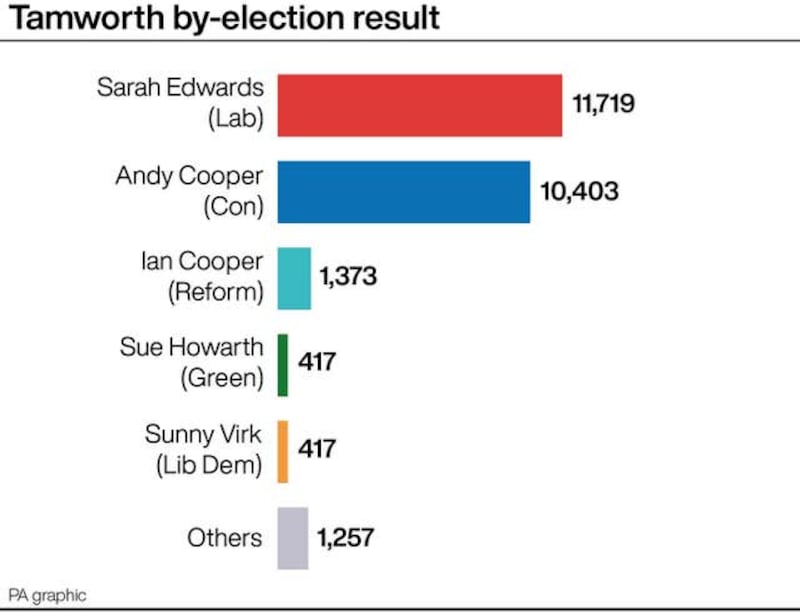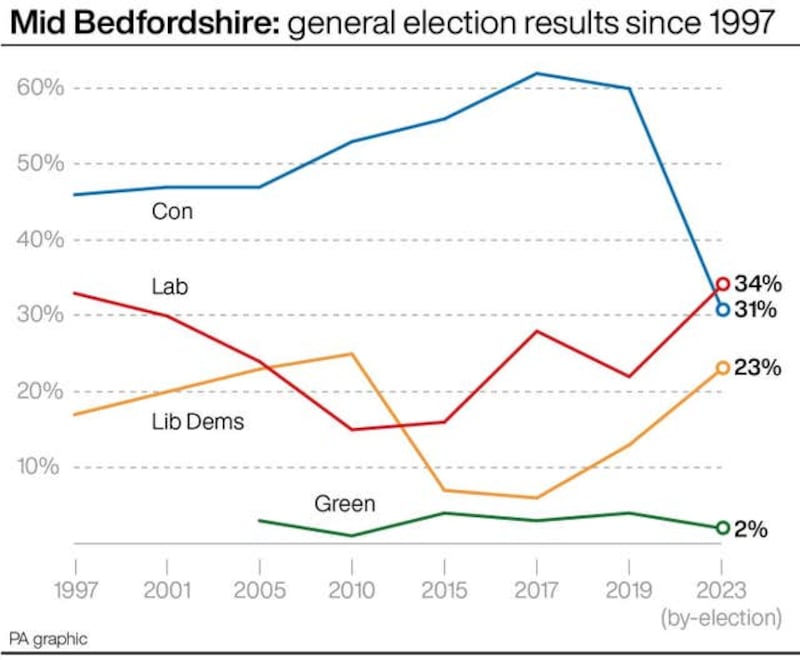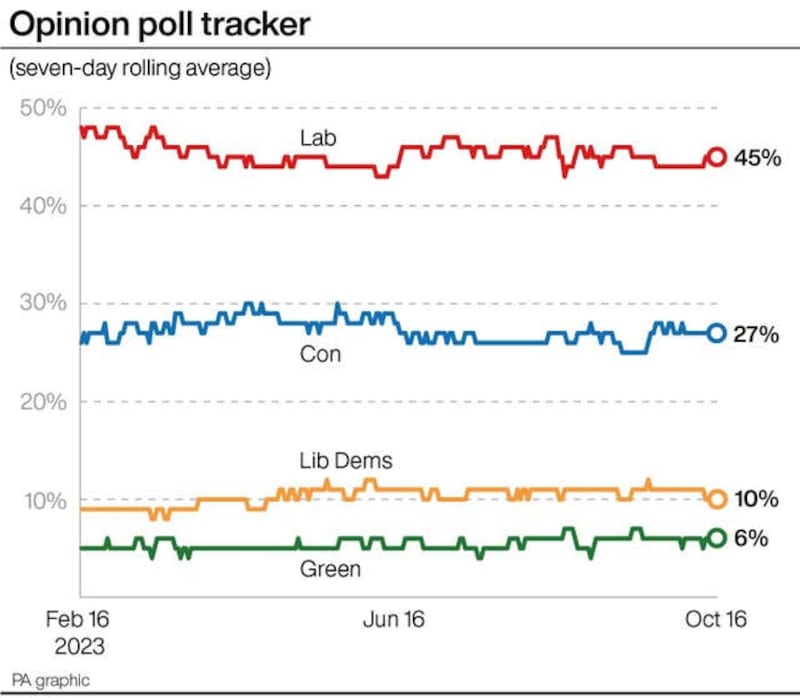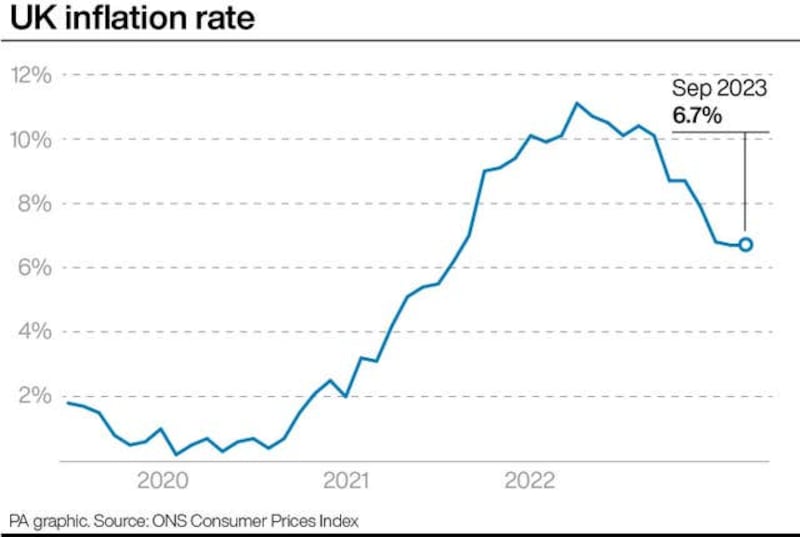Rishi Sunak has suffered the loss of two previously safe Tory seats, with Labour securing swings of more than 20 percentage points to take Tamworth and Mid Bedfordshire.
As the Prime Minister approaches the 12-month mark in the job, here we look at what the defeats mean for his future.
– What happened?
In the space of 30 minutes in the early hours of Friday morning the Conservatives lost Tamworth – which it held with a majority of 19,634 in 2019 – and then Mid Bedfordshire, where there had been a massive 24,664 vote cushion.

– Was that unexpected?
Mid Bedfordshire had been Tory since 1931 and it was the biggest Conservative majority overturned by Labour at a by-election since 1945.
In Tamworth, two-thirds of the vote went to the Conservatives in 2019.
Labour described the chances of winning either as a “moon shot”.

– But strange things happen in by-elections, don’t they?
The Tories expected a difficult night, in part because governing parties often suffer a by-election backlash but also because of the controversies that led to the two vacancies.
Former culture secretary Nadine Dorries announced she was quitting her Mid Bedfordshire seat with immediate effect in June after being declined a peerage in Boris Johnson’s resignation honours list, although despite that assertion she stayed on as an MP until nearly the end of August.
Tamworth’s Chris Pincher quit in disgrace after being found to have drunkenly groped two men at London’s exclusive Carlton Club – the handling of that scandal contributed to Mr Johnson’s downfall as prime minister.
– So can these defeats just be shrugged off as cases of mid-term blues in contests triggered in unusual circumstances?
No, especially not with a general election expected next year.
A series of Tory strongholds have collapsed in by-elections, and worryingly for Mr Sunak they have been spread across the country with different political factors and opponents at play.
Swings of over 20 percentage points have taken place at eight by-elections in the past three years – a pattern that is unprecedented in recent political history.
Seven of those contests have seen the Tories lose seats, four to the Liberal Democrats and three to Labour.
– What could it mean for the general election?
Mr Sunak has to go to the country by January 2025 at the latest, but spring or autumn 2024 are more likely options.
Labour has highlighted the fact that a seat like Tamworth was not even on its target list of constituencies it would need to take to win a general election.

Respected elections expert Professor Sir John Curtice said the Conservatives were “staring defeat in the face” next year unless there was a dramatic turnaround in the party’s fortunes.
Considering the Tories won in 2019 with a majority of 80, the prospect of a Conservative defeat would represent a seismic shift in British politics in the space of five years.
– Can Mr Sunak turn it around?
The phrase “it’s the economy, stupid” has become a political cliche, but Mr Sunak has to a large degree pinned his hopes on an improving economic picture.
He will hope that growth picks up, inflation falls and people feel a sense of optimism about the direction of the country.

With discretion over the timing of the general election, he can choose the point he feels it is most likely to result in a Tory win.
But the state of the public finances could restrict Chancellor Jeremy Hunt’s ability to deliver a tax-cutting, voter-pleasing budget in the run-up to the election.
And problems with NHS waiting lists and small boat crossings of the English Channel are unlikely to disappear despite promises to deal with them featuring prominently in Mr Sunak’s priorities for government.







